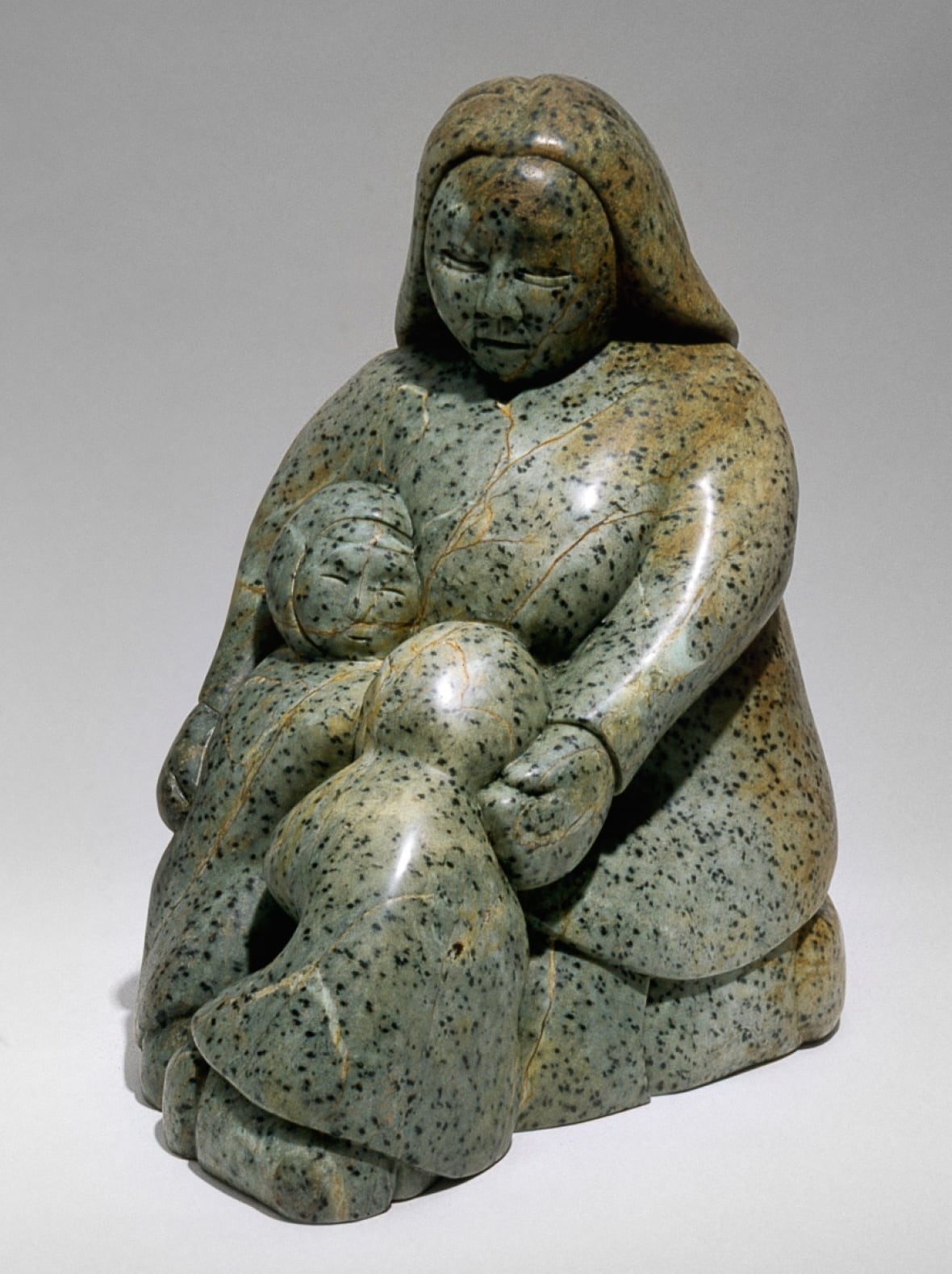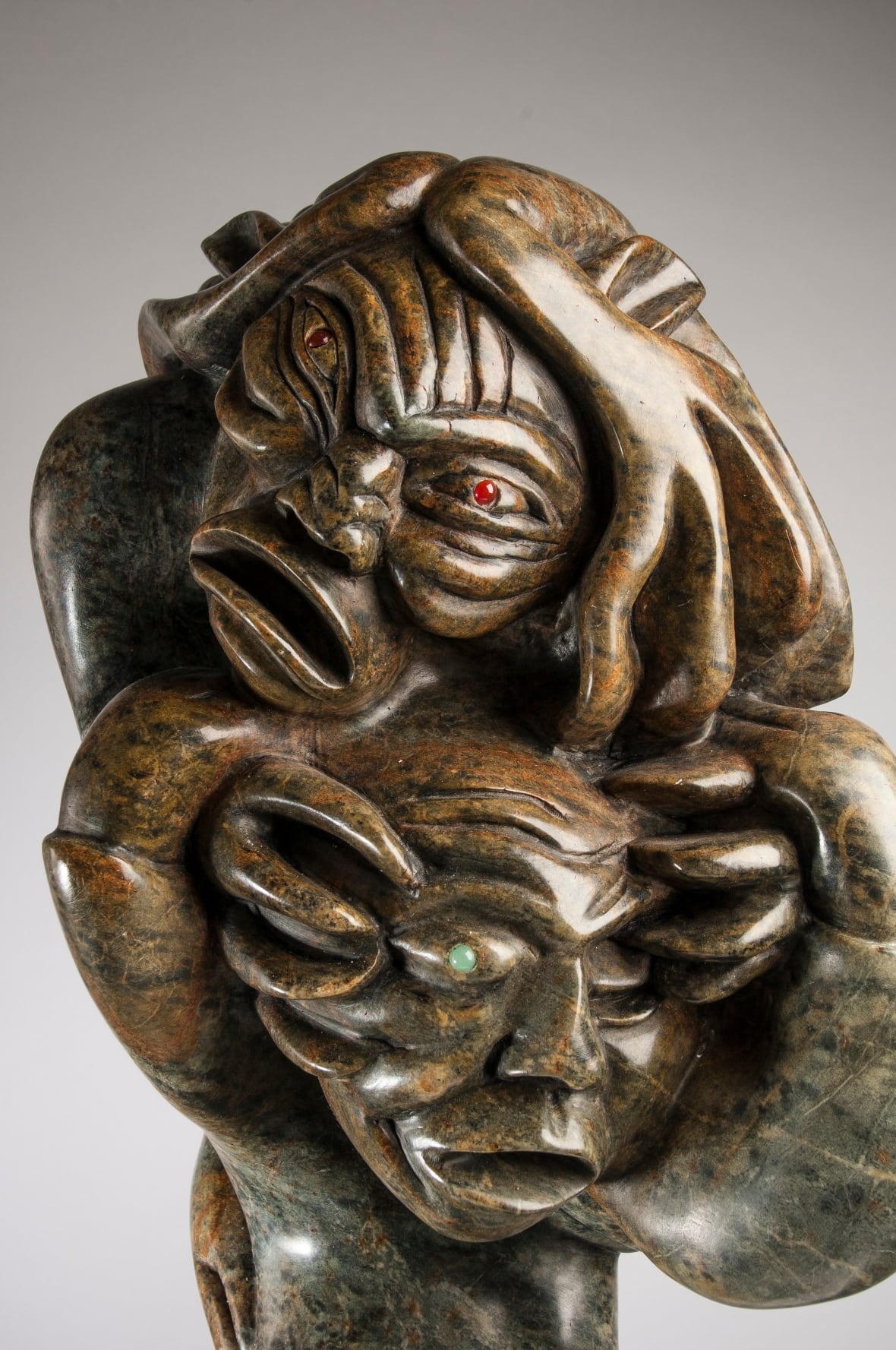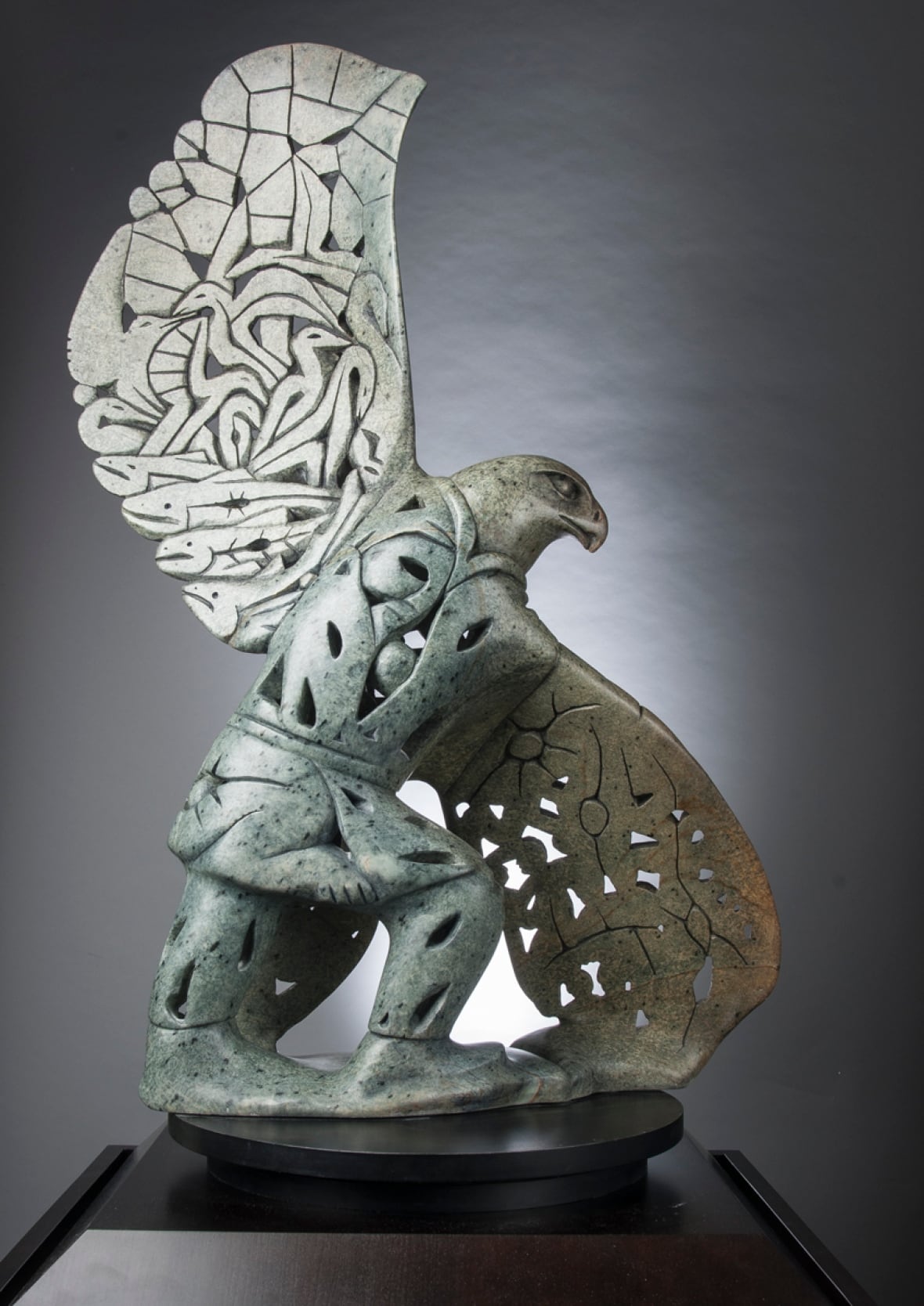Abraham Anghik Ruben preserves his life and culture through sculpture
Abraham Anghik Ruben is a world-renowned sculptor who’s been creating groundbreaking and genre-defining work for the last five decades.
The Inuk artist is best known for his multidimensional sculptures, which he carves out of stone, ivory, bronze and bone. More recently, he’s also taken up painting.
With an ongoing solo show at the Winnipeg Art Gallery-Qaumajuq, Ruben joins guest host Garvia Bailey to look back on 50 years of creativity. He also shares what needs to happen to ensure that art from the North continues to thrive.
Listen to Ruben’s conversation with Bailey and follow along using this visual companion guide.
The Last Goodbye

When Ruben was four years old, his siblings David and Martha were sent to a residential school. He didn’t see them again for three years. His sculpture The Last Goodbye from 2001 is a snapshot of the day they left.
“[It’s] a sculpture of my mother and the choices that she had to make in sending my older siblings, David and Martha, off to school,” Ruben says. “She realized that in sending them off to school, she would not see them for several years…. I wanted to capture that moment in time because that wasn’t the only time that my mother had her last goodbyes with her children. We came from a family of 16 children, 15 of which had survived. She had to say goodbye many times, but this one was the one when I saw them leaving, and I could see the pain in both my mother and father’s eyes.”
Wrestling with my Demons

At eight years old, Ruben was also sent to a residential school, roughly 400 kilometers away from everyone and everything he knew. He stayed there for 11 years, only returning home in the summers. That experience, which Ruben has described as a dark night of the soul, is reflected in his 2001 sculpture Wrestling with my Demons.
“The sculpture Wrestling with my Demons is my way of trying to come to terms with my past,” he says. “I’d been an alcoholic since the age of 18 to the age of 36. The alcoholism was in response to my years in residential school and the demons that would surface up. As a response to what I had experienced and what I’ve been witness to.”
Danish Shaman; Through the Mist of Time

There are a few figures that repeatedly come up in Ruben’s work. One is the Norse god Odin and another is the figure of the shaman, in various forms. His 2013 sculpture Danish Shaman; Through the Mist of Time depicts a man transforming into a hawk.
“The Vikings had their own version of shamanism,” Ruben tells Bailey. “Their sagas are filled with stories of shamanism. Odin was regarded as a shaman. The goddess Freyja was a shamanist who taught Odin the shamanic arts. So their myths, stories and legends are filled with shamanical imagery and great feats. The Inuit who left Alaska had their shamanic traditions from ancient Siberia. They struck out from North Alaska and headed out to Greenland in waves of migration, small camps, movements of people. They brought everything with them from Alaska…. So the sculptures are based on Inuit myth, stories and legends, Viking myths, stories and legends, and what I felt would have happened between these two.”
You can see more of Ruben’s work, including some of his paintings, below on Instagram.
The full interview with Abraham Anghik Ruben is available on our podcast, Q with Tom Power. Listen and follow wherever you get your podcasts.
Interview with Abraham Anghik Ruben produced by Cora Nijhawan.

